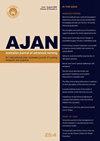记录患者风险和护理干预措施:记录审计
IF 1.3
4区 医学
Q3 NURSING
引用次数: 12
摘要
目的:目的是探讨和比较两种护理文件系统:纸质和数字记录的护理过程中患者安全的文件。背景:“护理过程”(评估、计划、干预和评估)被专业护理注册和卫生服务认证机构推荐为理解护士临床推理的关键组成部分。护士对病人安全的责任必须得到全面的文件实践的支持。研究设计和方法:回顾性审计20份临床护理记录(N = 20),随机选择来自澳大利亚一家三级医院的一个急症病房;10个来自数字试验,复制了选定的纸质表格和10个纸质记录作为对照。审计由两名护士研究人员使用专门构建的数据提取工具进行。结果:数字病历和纸质病历的患者年龄、性别和初诊相似。两种记录类型对整个护理过程的记录都很低,纸质和数字记录的护理文件的全面性相似。与纸质文献相比,数字文献更常被评为“完整”(p<0.05)。记录皮肤完整性风险(p<0.05)和完成护理干预以解决风险的证据在数字记录中更为频繁(p<0.05)。讨论:本研究的发现突出了护理过程的综合文献的重要差距,支持和告知护士对患者安全的临床推理。数字文件的改进反映了未来利用提示、可视化和推动等技术特定策略提高护士文件质量的机会。结论:本研究发现,医院文件的纸质和数字系统可能无法捕捉和传达护士的临床推理。数字系统有可能改善临床推理和护理过程的捕获。关于这个话题我们已经知道了什么?专业注册和医疗保健认证机构建议护士的临床决策是由评估、计划、干预和评估过程支撑的。对护士临床决策的不良记录会对护理的连续性、质量和安全产生负面影响;包括对病情恶化和护理升级的发现不足。电子系统有望提高记录护士决策的能力。本文补充的内容:护士的临床推理在纸质和数字文档系统中都没有得到很好的捕捉。与纸质记录相比,护士更经常在数字系统中记录他们对确定的患者风险的干预反应。数字系统为主动推动护士改进护理流程文件提供了机会。本文章由计算机程序翻译,如有差异,请以英文原文为准。
Documenting patient risk and nursing interventions: record audit
Objective: The aim was to explore and compare documentation of the nursing process for patient safety in two nursing documentation systems: paper and digital records. Background: The ‘nursing process’ (assessment, planning, intervention, and evaluation) is recommended by professional nursing registration and health service accreditation bodies as a key component of understanding nurses’ clinical reasoning. Nurses’ responsibility for patient safety must be supported by comprehensive documentation practices. Study design and methods: A retrospective audit of twenty clinical care records (N = 20) randomly selected from a single acute medical ward at a tertiary hospital in Australia; ten from a digital trial that replicated selected paper forms and ten paper records as controls. The audit was conducted by two nurse researchers using a purpose built data extraction tool. Results: Patient age, gender and primary diagnoses were similar for the digital and paper care records. Documentation of the full nursing process was low in both record types, and comprehensiveness of nursing documentation was similar across the paper and digital records. Compared to the paper documents, the digital documents were more often rated as ‘complete’ (p<0.05). Documentation of risk to skin integrity (p<0.05) and evidence of completed nursing interventions to address risks were more frequent (p<0.05) in digital records. Discussion: The findings of this study highlight an important gap in comprehensive documentation of the nursing process that supports and informs the clinical reasoning of nurses for patient safety. Improvements in digital documents reflect future opportunity to enhance the quality of nurse documentation using technology specific strategies such as prompts, visualisation and nudge. Conclusion: This research identifies that both paper and digital systems of hospital documentation may fail to capture and communicate the clinical reasoning of nurses. Digital systems have the potential to improve capture of the clinical reasoning and nursing process.
What is already known about the topic?
Professional registration and healthcare accreditation bodies recommend nurses’ clinical decision making is underpinned by processes of assessment, planning, intervention and evaluation.
Poor capture of nurses’ clinical decision making in their documentation has negative consequences for the continuity, quality and safety of care; including inadequate detection of deterioration and escalation of care.
Electronic systems are expected to enhance capture of nurse decision making in documentation.
What this paper adds:
Nurses’ clinical reasoning was poorly captured in both paper and digital documentation systems.
Nurses documented their intervention responses to identified patient risks more often in the digital system compared to paper records.
Digital systems offer an opportunity to proactively nudge nurses towards improved documentation of nursing processes.
求助全文
通过发布文献求助,成功后即可免费获取论文全文。
去求助
来源期刊
CiteScore
2.30
自引率
7.10%
发文量
27
审稿时长
>12 weeks
期刊介绍:
The Australian Journal of Advanced Nursing publishes a wide variety of original research, review articles, practice guidelines, and commentary relevant to nursing and midwifery practice, health- maternity- and aged- care delivery, public health, healthcare policy and funding, nursing and midwifery education, regulation, management, economics, ethics, and research methodology. Further, the journal publishes personal narratives that convey the art and spirit of nursing and midwifery.
As the official peer-reviewed journal of the ANMF, AJAN is dedicated to publishing and showcasing scholarly material of principal relevance to national nursing and midwifery professional, clinical, research, education, management, and policy audiences. Beyond AJAN’s primarily national focus, manuscripts with regional and international scope are also welcome where their contribution to knowledge and debate on key issues for nursing, midwifery, and healthcare more broadly are significant.

 求助内容:
求助内容: 应助结果提醒方式:
应助结果提醒方式:


